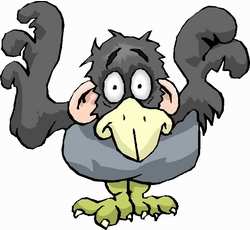Wed, Jun 10, 2009
Companies Disagree On Technology
 There's an old saying in aviation
that "a bird in the prop will cause the airplane to stop."
Bird strikes have always been a cause for concern in the aviation
industry, and one of the topics scheduled to be reviewed at this
week's NTSB hearing on US Airways Flight 1549 is developments in
technologies such as radar for bird tracking at airports.
There's an old saying in aviation
that "a bird in the prop will cause the airplane to stop."
Bird strikes have always been a cause for concern in the aviation
industry, and one of the topics scheduled to be reviewed at this
week's NTSB hearing on US Airways Flight 1549 is developments in
technologies such as radar for bird tracking at airports.
Industry reports progress with avian radar has been significant.
The FAA chose a Canadian Company’s Accipiter Avian Radar for
initial assessment of commercially available bird radar systems.
Dr. Tim J. Nohara, President of Accipiter Radar explains
“avian radar can help mitigate bird hazards where they are
most likely to occur around the airport. Realtime monitoring and
alerting of approaching flocks of birds helps wildlife control
personnel better manage bird hazards.”
In the case of Flight 1549 Dr. Nohara maintains “the
accident was unusual, happening at 2800 feet altitude and at quite
a distance beyond the airport. While the coverage versus accuracy
trade-off associated with today’s avian radars would have
been limiting for the 1549 accident, new antennas under development
... will soon provide improved 3D bird localization accuracy to
facilitate a warning to pilots even in this case.”
 But a second company, called DeTect
and based in Florida, has also called on the FAA to deploy avian
radar at airports around the country in light of this week's NTSB
hearings, and says no more study is needed. Gary W. Andrews, CEO of
DeTect, said in a statement "Our military already uses the
technology, NASA uses bird radars, it is time to let our commercial
airports use the systems. Ongoing statements by the FAA ... that
bird radars are not ready for operational use, will take years more
research and could not have prevented the US Airways birdstrike
related crash, simply are not correct. Bird radars currently
operating regularly detect and track flocks of geese at ranges far
beyond the 3 miles distance and 2800 feet altitude as was the flock
that brought down flight 1549. These systems are already being used
operationally to provide risk advisories to controllers and
pilots."
But a second company, called DeTect
and based in Florida, has also called on the FAA to deploy avian
radar at airports around the country in light of this week's NTSB
hearings, and says no more study is needed. Gary W. Andrews, CEO of
DeTect, said in a statement "Our military already uses the
technology, NASA uses bird radars, it is time to let our commercial
airports use the systems. Ongoing statements by the FAA ... that
bird radars are not ready for operational use, will take years more
research and could not have prevented the US Airways birdstrike
related crash, simply are not correct. Bird radars currently
operating regularly detect and track flocks of geese at ranges far
beyond the 3 miles distance and 2800 feet altitude as was the flock
that brought down flight 1549. These systems are already being used
operationally to provide risk advisories to controllers and
pilots."
Obviously, both of these companies would like to sell bird
detection equipment on a government contract. The NTSB hearing the
week will focus on a variety of issues relating to US Airways 1549.
ANN reported Tuesday that DNA testing showed that the geese that
caused the crash were migratory, which experts say require more
elaborate techniques in order to monitor bird movements.
More News
Aero Linx: Model Aeronautical Association of Australia MAAA clubs are about fun flying, camaraderie and community. For over 75 years, the MAAA has been Australia’s largest fl>[...]
Touchdown Zone Lighting Two rows of transverse light bars located symmetrically about the runway centerline normally at 100 foot intervals. The basic system extends 3,000 feet alon>[...]
“Discovery and innovation are central to our mission at Virgin Galactic. We’re excited to build on our successful record of facilitating scientific experiments in subor>[...]
How To Get A Story On Aero-TV News/Feature Programming How do I submit a story idea or lead to Aero-TV? If you would like to submit a story idea or lead, please contact Jim Campbel>[...]
Student Pilot Reported That During Rotation, “All Of A Sudden The Back Of The Plane Kicked To The Right..." Analysis: The student pilot reported that during rotation, “>[...]
 ANN's Daily Aero-Linx (05.02.24)
ANN's Daily Aero-Linx (05.02.24) ANN's Daily Aero-Term (05.02.24): Touchdown Zone Lighting
ANN's Daily Aero-Term (05.02.24): Touchdown Zone Lighting Aero-News: Quote of the Day (05.02.24)
Aero-News: Quote of the Day (05.02.24) ANN FAQ: Contributing To Aero-TV
ANN FAQ: Contributing To Aero-TV NTSB Final Report: Cirrus Design Corp SR20
NTSB Final Report: Cirrus Design Corp SR20




